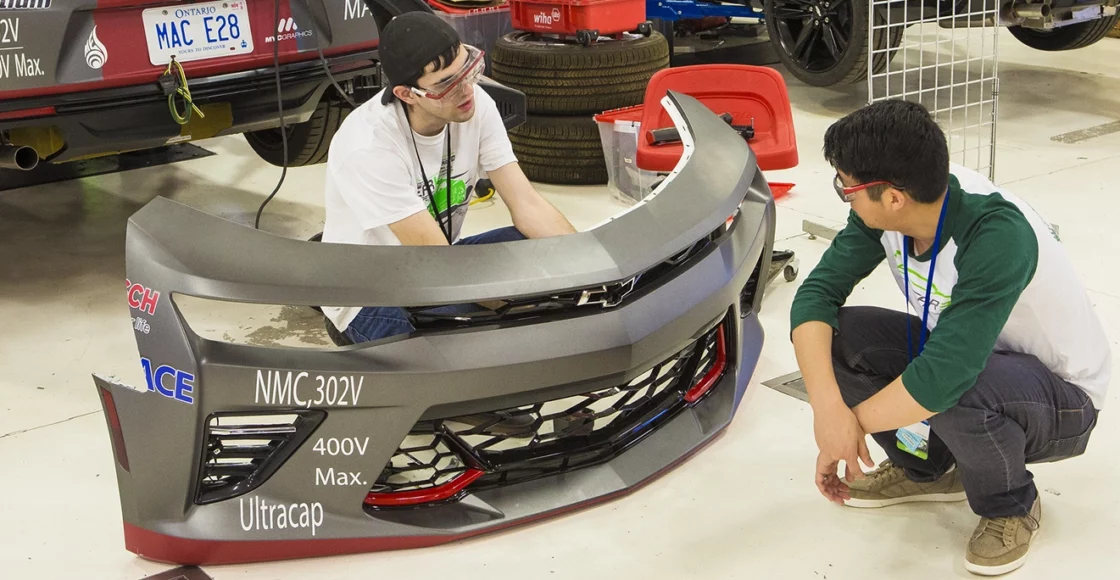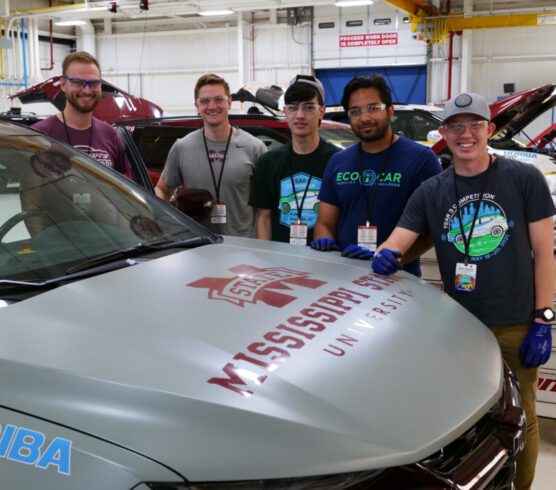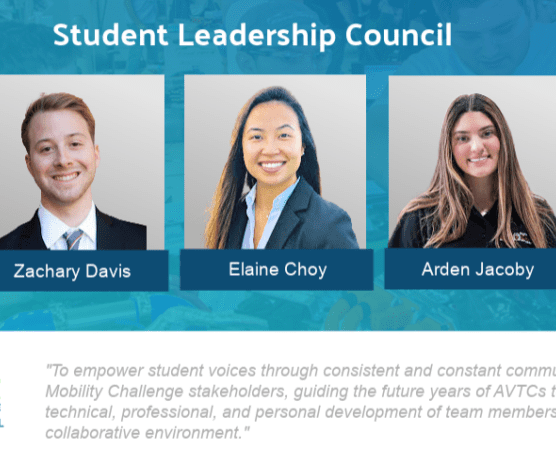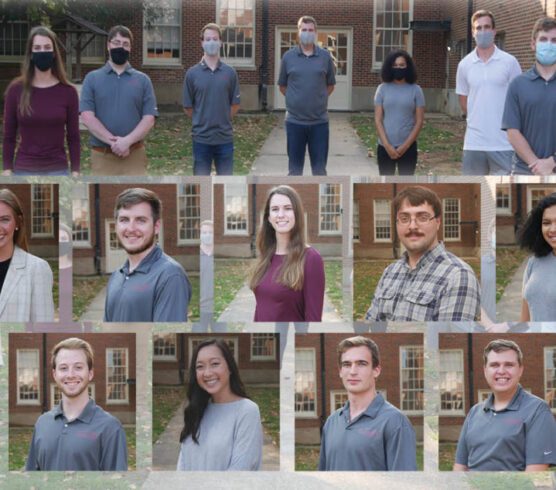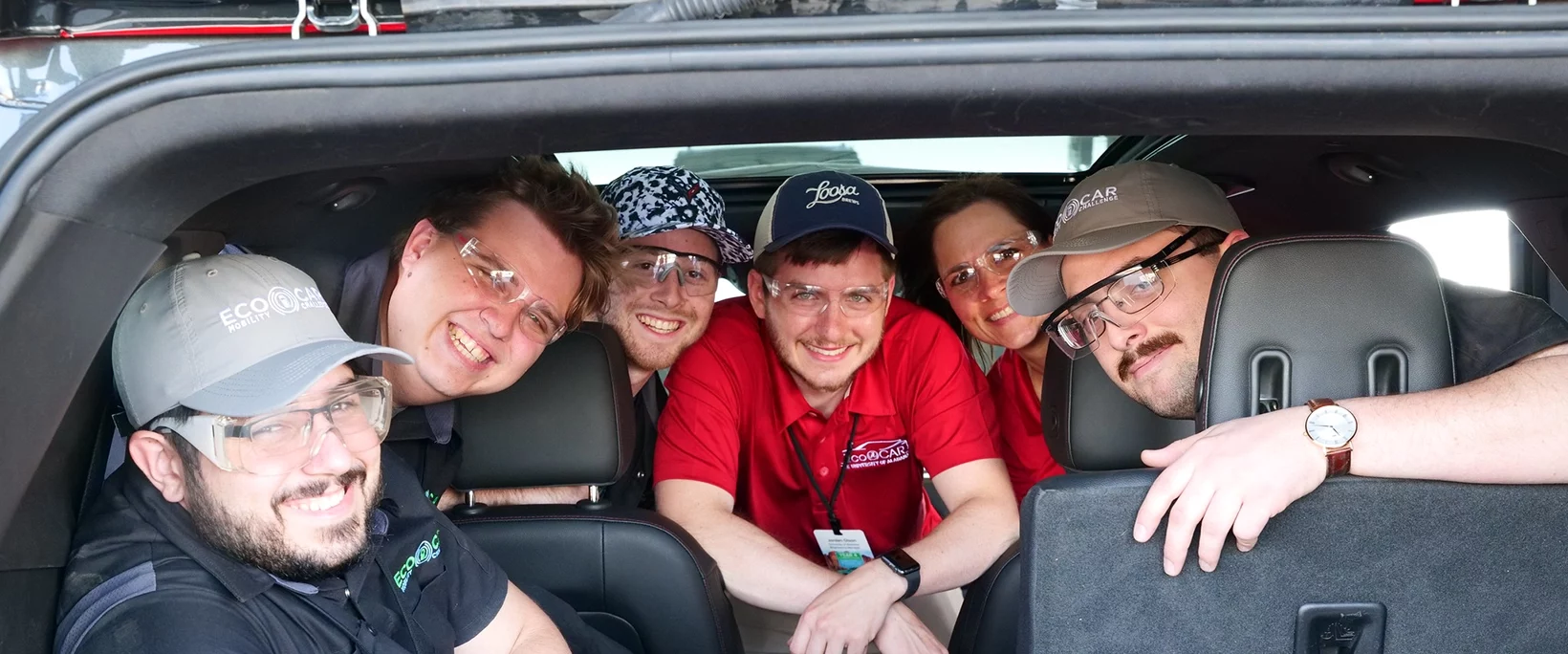This blog was originally posted by Colorado State University’s Campus News on May 15, 2014 and can be credited to Kortny Rolston. The original post can be found here.
Inside a building at Colorado State University’s Motorsport Engineering Research Center, students look over a Chevrolet Malibu in various states of disassembly.
They discuss potential modifications to the car, which recently underwent emissions testing at Argonne National Laboratory. Any mods they make will be the last before the final round of competition for the national EcoCAR 2 program begins on June 1.
“It’s pretty intense around here,” said Benjamin Geller, a graduate student helping lead CSU’s Vehicle Innovation Team. “We’re staring down at the finish line.”
EcoCAR program
For the past three years, the team has overhauled and re-designed the 2013 Chevrolet Malibu, which was donated by General Motors, which co-sponsors the EcoCAR program with the U.S. Department of Energy.
The goal of the national program is to task student teams with building a “greener” vehicle that emits fewer greenhouse gases and operates on alternative fuels such as electricity. It also must meet the same performance standards as the original vehicle.
Other than that, there are few design specifications, giving teams a wide berth to create innovative vehicles and technologies.
Few teams have embraced that as wholly as CSU.
Of the 15 university teams participating in EcoCAR 2, CSU’s is the only to have converted the original gas-combustion Malibu to operate, in part, on compressed hydrogen. It uses no gasoline and its only emission is clean water vapor produced by a reaction between fuel cells, hydrogen, oxygen and electricity used for propulsion.
The design was controversial at first. Neither GM, which provides mentors for each team, nor the Department of Energy had anticipated it and had to reallocate resources to support it.
“They had to find someone with an expertise in this area who could act as a program mentor,” said Tom Bradley, a professor of mechanical engineering in the College of Engineering and EcoCAR advisor.
A new concept
While operating a vehicle on compressed hydrogen is not new – national labs and automakers have experimented with the concept for years – CSU’s concept is.
Rather than replace the existing combustion system with hydrogen, like much of the research has focused on, CSU students have created a plug-in hydrogen-electric hybrid. The vehicle can run off rechargeable batteries for short, daily commutes of 50 miles or less. Beyond that, the hydrogen fuel cells kick in.
“It functions much like a Chevrolet Volt but instead of gasoline it uses compressed hydrogen,” Bradley said. “That’s what makes it different from other hydrogen designs.”
To accommodate three large compressed hydrogen tanks, the team gutted the Malibu. Students have re-designed and rebuilt every system on the vehicle – from the drive train to propulsion–and customized the interior to make room for the battery pack and tanks.
“The only things we haven’t touched are the front seats,” Geller said.
It can drive 200-plus miles before the hydrogen tanks need to be refilled and is highly fuel efficient, getting the equivalent of approximately 90 miles per gallon.
All eyes on CSU car
The hydrogen-electric hybrid concept has garnered attention from sponsors and industry, something of which Bradley, Geller and the Vehicle Innovation Team are keenly aware. The CSU vehicle is expected to do well in the emissions portion of the competition since its only emission is water vapor.
But that is only one area in which the vehicle and the students will be judged. Experts also will evaluate its performance, safety rating and other features.
The vehicle will go through extensive testing at GM Proving Grounds in Michigan in June. From there, the team and vehicle head to Washington D.C. where students will present on their work.
“There are a lot of eyes on the CSU vehicle because it is so unusual,” Bradley said. “People want to see if this idea can work.”
Last-minute preparations
In the meantime, the Vehicle Innovation Team, which is comprised of undergraduate and graduate engineering students, continues to evaluate their work and decide if and how many modifications are needed. They scored high on the recent emission testing at Argonne but experts recommended a few changes to improve safety. To do that, they have to tear the car and rebuild it by late May.
“We’re going to be spending every extra hour we have between now and then getting ready for the competition,” Geller said.
